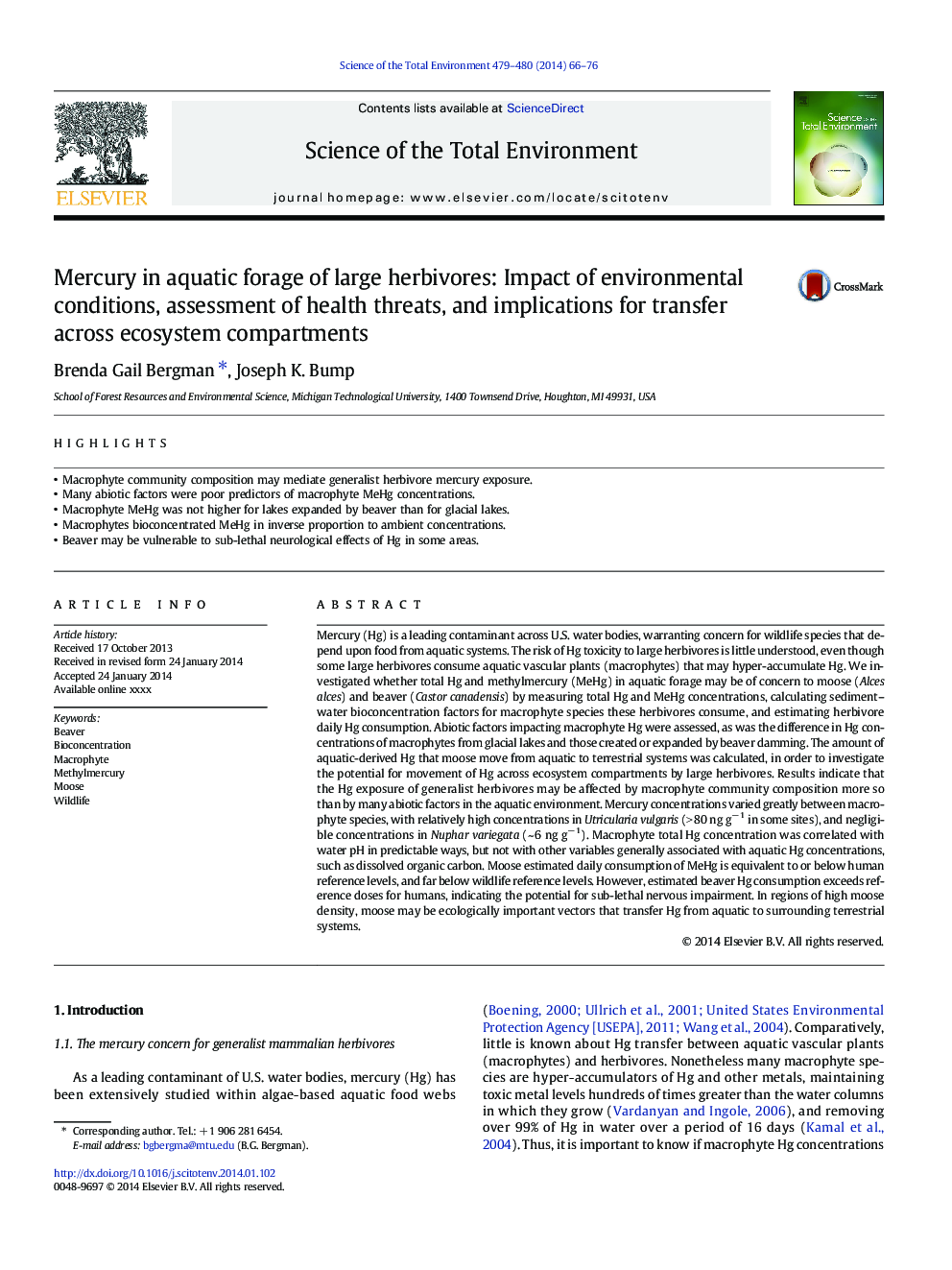| کد مقاله | کد نشریه | سال انتشار | مقاله انگلیسی | نسخه تمام متن |
|---|---|---|---|---|
| 6330968 | 1619787 | 2014 | 11 صفحه PDF | دانلود رایگان |
عنوان انگلیسی مقاله ISI
Mercury in aquatic forage of large herbivores: Impact of environmental conditions, assessment of health threats, and implications for transfer across ecosystem compartments
ترجمه فارسی عنوان
عطارد در غذای آبی علف های هرز بزرگ: تاثیر شرایط محیطی، ارزیابی تهدیدات بهداشتی و پیامدهای انتقال آن در بخش های اکوسیستم
دانلود مقاله + سفارش ترجمه
دانلود مقاله ISI انگلیسی
رایگان برای ایرانیان
کلمات کلیدی
سگ ابی، تمرکز بیولوژیک، ماکروفیت، متیل کرچک، گوزن شمالی، حیات وحش،
موضوعات مرتبط
علوم زیستی و بیوفناوری
علوم محیط زیست
شیمی زیست محیطی
چکیده انگلیسی
Mercury (Hg) is a leading contaminant across U.S. water bodies, warranting concern for wildlife species that depend upon food from aquatic systems. The risk of Hg toxicity to large herbivores is little understood, even though some large herbivores consume aquatic vascular plants (macrophytes) that may hyper-accumulate Hg. We investigated whether total Hg and methylmercury (MeHg) in aquatic forage may be of concern to moose (Alces alces) and beaver (Castor canadensis) by measuring total Hg and MeHg concentrations, calculating sediment-water bioconcentration factors for macrophyte species these herbivores consume, and estimating herbivore daily Hg consumption. Abiotic factors impacting macrophyte Hg were assessed, as was the difference in Hg concentrations of macrophytes from glacial lakes and those created or expanded by beaver damming. The amount of aquatic-derived Hg that moose move from aquatic to terrestrial systems was calculated, in order to investigate the potential for movement of Hg across ecosystem compartments by large herbivores. Results indicate that the Hg exposure of generalist herbivores may be affected by macrophyte community composition more so than by many abiotic factors in the aquatic environment. Mercury concentrations varied greatly between macrophyte species, with relatively high concentrations in Utricularia vulgaris (> 80 ng gâ 1 in some sites), and negligible concentrations in Nuphar variegata (~ 6 ng gâ 1). Macrophyte total Hg concentration was correlated with water pH in predictable ways, but not with other variables generally associated with aquatic Hg concentrations, such as dissolved organic carbon. Moose estimated daily consumption of MeHg is equivalent to or below human reference levels, and far below wildlife reference levels. However, estimated beaver Hg consumption exceeds reference doses for humans, indicating the potential for sub-lethal nervous impairment. In regions of high moose density, moose may be ecologically important vectors that transfer Hg from aquatic to surrounding terrestrial systems.
ناشر
Database: Elsevier - ScienceDirect (ساینس دایرکت)
Journal: Science of The Total Environment - Volumes 479â480, 1 May 2014, Pages 66-76
Journal: Science of The Total Environment - Volumes 479â480, 1 May 2014, Pages 66-76
نویسندگان
Brenda Gail Bergman, Joseph K. Bump,
